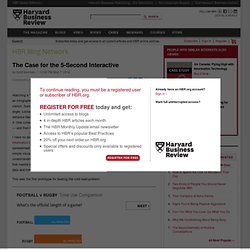

Big data open source tools - object databases. Object databases first started to appear in 1985 and they are also known as object-oriented database management systems.

The data in such databases is stored in the form of objects, as used by object-oriented programming. They are different from relational or graph databases and most of them offer a query language that allows object to be found with a declarative programming approach. Db4objects Db4o is the open source object database that is supported by a large community. The database allows .Net and Java and developers to store and recover any application object with just 1 line of code. PicoLisp PicoLisp is a Lisp dialect running on Linux and it features a database functionality. FramerD FramerD, developed in 2005, allows computerized creation, access and manipulation of descriptions and systems of descriptions. Siaqodb. Big Data White Papers. No está disponible. Prism-skylabs_dashboard.png (1267×831) No está disponible. Whether at work or home, there are highs and lows.

And you’re not getting special treatment, that’s how it is for everyone. And it’s a powerful fundamental, so don’t try to control it, ride it. When the sailing is smooth, at some point it won’t be – the winds change, that’s what they do. And when you’re suddenly buffeted from a new direction, you take action. But what action? Your actions depend on your why. Often you set sail without realizing you don’t have your why battened down and stowed. Before you set sail, it’s best to know why you’re in the boat.. Wait! Choose how you want the latest innovation content delivered to you: No está disponible. No está disponible. Analytic and enumerative statistical studies are two types of scientific studies: In any statistical study the ultimate aim is to provide a rational basis for action.

Enumerative and analytic studies differ by where the action is taken. Deming summarized the distinction between enumerative and analytic studies as follows:[1] Enumerative study: A statistical study in which action will be taken on the material in the frame being studied. Analytic study: A statistical study in which action will be taken on the process or cause-system that produced the frame being studied. These terms were introduced in Some Theory of Sampling (1950, Chapter 7) by W. In other words, an enumerative study is a statistical study in which the focus is on judgment of results, and an analytic study is one in which the focus is on improvement of the process or system which created the results being evaluated and which will continue creating results in the future. No está disponible. No está disponible. Hardly a day goes by that I don’t meet it, the struggle with emotions at work.

The misunderstood colleague, filled with frustration, attempting not to show it; the executive wondering how to confront her team’s lack of enthusiasm; the student hesitating to confess his affection to a classmate. It has been two decades since emotional intelligence became a cornerstone of managers’ self-improvement projects. Meditation has broken into the C-suite. Alpha males and females extol the virtues of mindfulness.
And still we remain unsure about what to do with emotions at work. One moment we do not have enough emotion, the next we have too much. The pursuit of passionate equanimity in the office might look like a valid remedy for the consuming pace of business in our day and age. We have come to regard emotions as assets—precious or toxic as they may be—rather than as data. Not because we’re neglectful of our emotions, incompetent at managing them, or simply, hopelessly human. Who gets to feel what? No está disponible. By Scott Berinato | 12:00 PM May 7, 2014 Watching a “cold read” of a data visualization is revelatory.

Try this: Hand some friends a printout of an infographic and ask what they think. Then, watch them. People’s eyes will dart, their jaws will clench. Sometimes they will move the paper around, as if meaning will emerge at just the right angle. I have no doubt about the value of data visualization. This was the first prototype for beating the cold read problem: You might be asking, That’s it? No está disponible. By Tom Davenport | 12:00 PM May 5, 2014 For almost a decade I have heard that good quantitative analysts can “tell a story with data.”

Narrative is—along with visual analytics—an important way to communicate analytical results to non-analytical people. Very few people would question the value of such stories, but just knowing that they work is not much help to anyone trying to master the art of analytical storytelling. What’s needed is a framework for understanding the different kinds of stories that data and analytics can tell. If you don’t know what kind of story you want to tell, you probably won’t tell a good one. This insight came in an interview a couple of years ago with Joe Megibow, a leading analytics practitioner who was head of web analytics at Expedia and is now Senior Vice President of Omnichannel E-Commerce at American Eagle. Time: Analytical stories can be about the past, present, or future.
Generating Data on What Customers Really Want - Juan Pablo Vazquez Sampere. By Juan Pablo Vazquez Sampere | 11:00 AM May 6, 2014 At a fundamental level, the decisions managers make about revenue and profits fall into two categories—those related to growth and those related to cost reduction.

Both types are meant to increase margins.